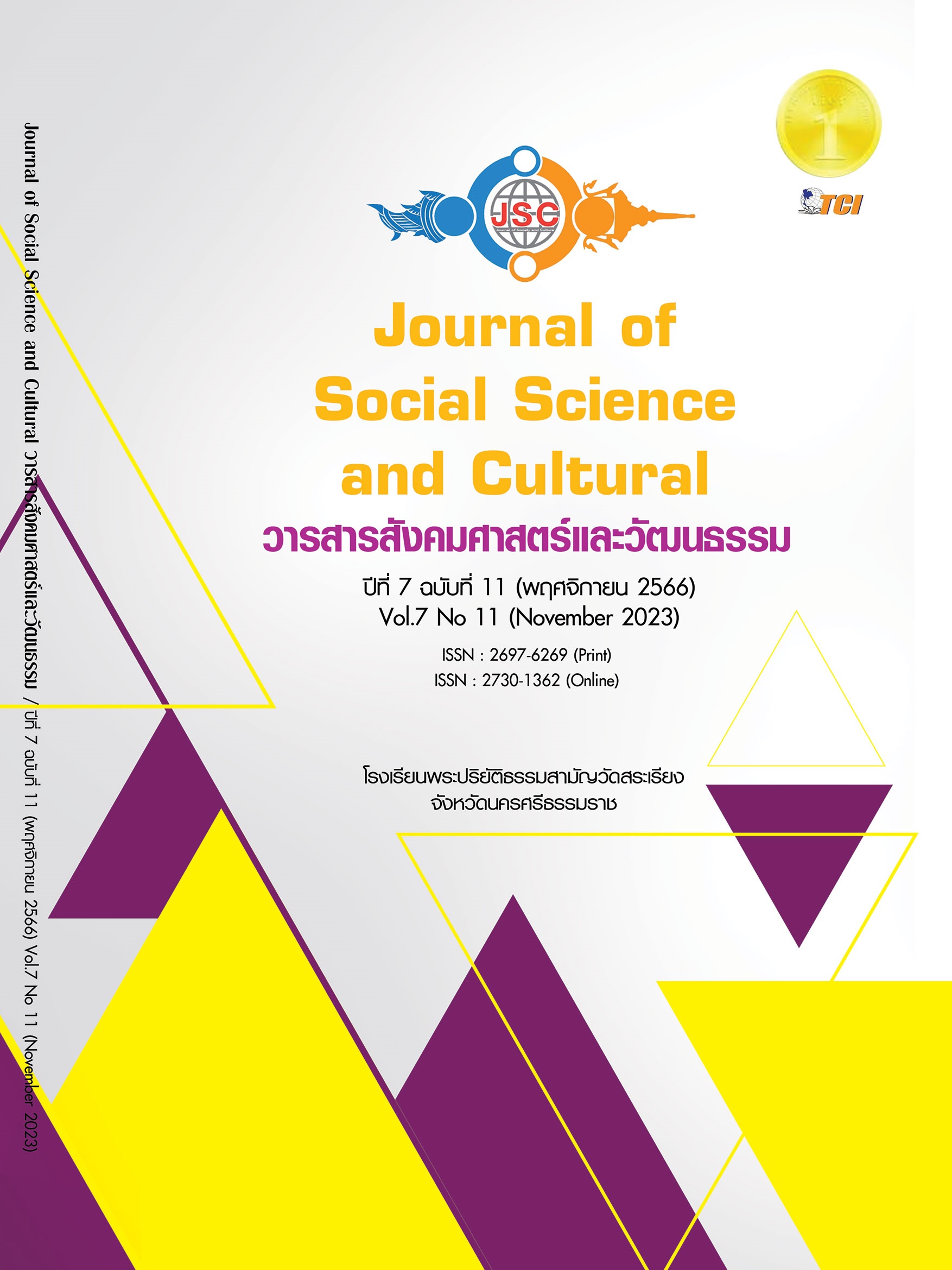EVALUATION OF THE NATIONAL COUNCIL FOR PEACE AND ORDER GOVERNMENT’S MEASURES TO SLOVE THE OVERPRICED LOTTERY PROBLEM
Main Article Content
Abstract
Evaluation of the National Council for Peace and Order Government’s Measures to Slove the Overpriced Lottery Problem was to assess the government’s measures against overpriced lottery tickets using program theory, and logic model. Mixed Method approach was employed using documentary research techniques to review documents related to the problem in order to develop a logic model for evaluation. The data were collected through interviews with 30 informants who could be divided into three groups; Four experts with specialized knowledge on the sale of government lottery tickets, Five practitioners who implemented the NCPO government’s road map, and Twenty-one involved people who were separated into government lottery buyers and sellers. The obtained data were used to create questionnaires to survey the opinions of lottery buyers and sellers. The research results were divided into three phases: short-term, intermediate, and long-term. For the short-term outcome, three activities were achieved, namely the cancellation of distributor contracts with legal entities, the implementation of the lottery purchasing and advance booking project, and the modification of the Government Lottery Office Act, while the other were not achieved, comprising strict law enforcement against overpriced lottery sellers, the reduction of lottery sets and the better selling of unpopular lottery numbers, and the reduced cost of a lottery ticket of less than 74.40 baht. Regarding the intermediate outcome, the anxiety of sellers about law enforcement against overpriced lottery sellers was achieved, whereas the other, namely the number of sellers with unsold lottery tickets in each draw and the reduction of middlemen in the lottery distribution process, were not achieved. In terms of the long-term outcome, the first activity, the lottery price that consumers pay (80 baht) and the lottery cost that sellers pay (70.40 baht), was not achieved, but the second activity, the modernization of the distribution process, was achieved.
Article Details
References
วัลลภ รัฐฉัตรานนท์. (2562). การหาขนาดตัวอย่างที่เหมาะสมสำหรับการวิจัย: มายาคติในการใช้สูตรของ ทาโร ยามาเน่ และเครทซี-มอร์แกน. วารสารสหวิทยาการวิจัย: ฉบับบัณฑิตศึกษา, 8(1), 11-28.
ศศิธร นิธิปรีชานันท์. (2556). ปัญหาทางกฎหมายในการควบคุมการจำหน่ายสลากกินแบ่งรัฐบาลเกินราคา. วารสารรามคำแหง ฉบับนิติศาสตร์, 2(1), 67-78.
ศูนย์วิจัยเพื่อการพัฒนาสังคมและธุรกิจ. (2557). โครงการสำรวจความคิดเห็นต่อข้อเสนอเพื่อแก้ไขปัญหาสลากกินแบ่งรัฐบาล. เรียกใช้เมื่อ 10 มกราคม 2566 จาก http://www.sabcentre.com/artical/art003.pdf
สำนักงานสลากกินแบ่งรัฐบาล. (2558). ข่าวประชาสัมพันธ์สำนักงานสลากกินแบ่งรัฐบาล เรื่อง การจำหน่ายสลากกินแบ่งรัฐบาลโดยการซื้อ-จองล่วงหน้าสลากกินแบ่งรัฐบาล. สำนักงานสลากกินแบ่งรัฐบาล: นนทบุรี.
NO.01. (5 มกราคม 2566). ปัญหาสลากกินแบ่งเกินราคา. (จินดา ธำรงอาจริยกุล, ผู้สัมภาษณ์)
NO.02. (29 พฤจิกายน 2565). การจำหน่ายสลากกินแบ่งรัฐบาล. (จินดา ธำรงอาจริยกุล, ผู้สัมภาษณ์)
NO.04. (10 ธันวาคม 2565). ปัญหาสลากกินแบ่งเกินราคา. (จินดา ธำรงอาจริยกุล, ผู้สัมภาษณ์)
NO.08. (20 มกราคม 2566). การจำหน่ายสลากกินแบ่งรัฐบาล. (จินดา ธำรงอาจริยกุล, ผู้สัมภาษณ์)
NO.11. (5 มกราคม 2566). ปัญหาสลากกินแบ่งเกินราคา. (จินดา ธำรงอาจริยกุล, ผู้สัมภาษณ์)
NO.12. (21 ธันวาคม 2565). ปัญหาสลากกินแบ่งเกินราคา. (จินดา ธำรงอาจริยกุล, ผู้สัมภาษณ์)
NO.13. (17 ธันวาคม 2565). การซื้อสลากกินแบ่งรัฐบาล. (จินดา ธำรงอาจริยกุล, ผู้สัมภาษณ์)
NO.15. (2 ธันวาคม 2565). การจำหน่ายสลากกินแบ่งรัฐบาล. (จินดา ธำรงอาจริยกุล, ผู้สัมภาษณ์)
NO.16. (1 ธันวาคม 2565). การจำหน่ายสลากกินแบ่งรัฐบาล. (จินดา ธำรงอาจริยกุล, ผู้สัมภาษณ์)
NO.21. (22 มกราคม 2566). ปัญหาสลากกินแบ่งเกินราคา. (จินดา ธำรงอาจริยกุล, ผู้สัมภาษณ์)
NO.28. (5 มกราคม 2566). การจำหน่ายสลากกินแบ่งรัฐบาล. (จินดา ธำรงอาจริยกุล, ผู้สัมภาษณ์)
Chen, H., et al. (2018). Using logic models and the action model/change model schema in planning the learning community program: A comparative case study. Canadian Journal of Program Evaluation, 33(1). 49-68.
Funnell, S. C., & Rogers, P. J. (2011). Purposeful program theory: Effective use of theories of change and logic models. ResearchGate, 2011(31). 1-13.
Hayes, H., Parchman, M. L., & Howard, R. (2011). A logic model framework for evaluation and planning in a primary care practice-based research network (PBRN). The Journal of the American Board of Family Medicine, 24(5), 576-582.
Kellogg, W. K. (2004). Logic model development guide. Michigan: WK Kellogg Foundation.
McLaughlin, J. A., & Jordan, G. B. (2010). Using logic models. Handbook of practical program evaluation, 3(1), 55-80.
Wilder Research. (2009). Program theory and logic models Evaluation resources from Wilder Research. Retrieved มกราคม 10 , 2566, from http://www.evaluatod.org/assets/resources/evaluation-guides/logicmodel-8-09.pdf


